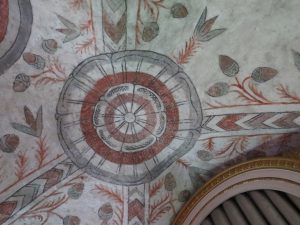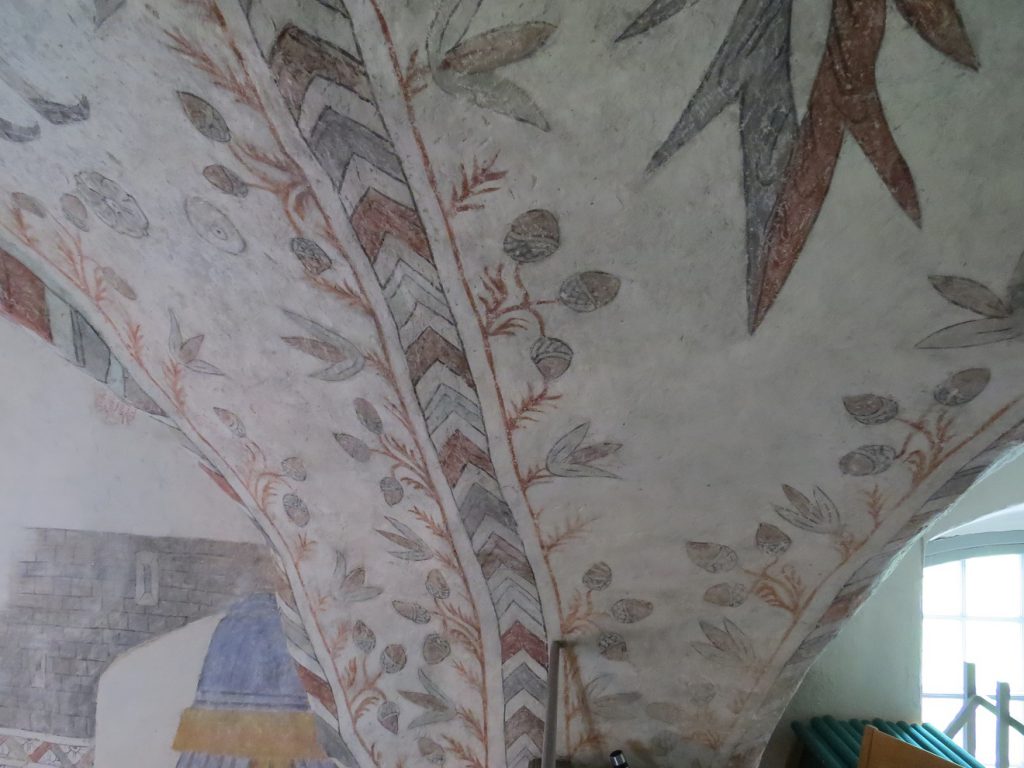Probably the most striking element of the little Marbäck church near Aneby are the painted frescoes on the ceiling.
According to the history booklet we picked up at the church, the paintings were done in the late 1400’s and the early 1500’s by the artist known by Master Amund, or at least by fellow artists associated with his studio. Interestingly, he also painted the Lena Church where Gustafva (Johansdotter) Brodd’s family came from. Unfortunately, we were not able to get inside that church to see those paintings (maybe next time…)
There are sets of painted figures in the Marbäck church that taken together, tell little stories:
- In the sanctuary, there are four figures that originally represented the four evangelists. Some of these have been painted over or modified.
- In the eastern nave, there are four images showing various saints, including St. Jerome and St. Ambrose.
- In the central nave, there are four sets of images from the creation. These images are supported by one or two Atlas-like figures each.
- In the eastern nave above the choir loft, the creation story continues.
In between the larger images are various geometric designs and plant ornamentation, especially acorns. We found the acorn imagery to be especially touching considering the proximity of the church to our ancestral Eket (oak) farm.
Here we see one of the creation images, showing the creation of the sun and moon, with the two Atlas-like figures giving support (as always, you may click on the images to bring up an enlarged version):
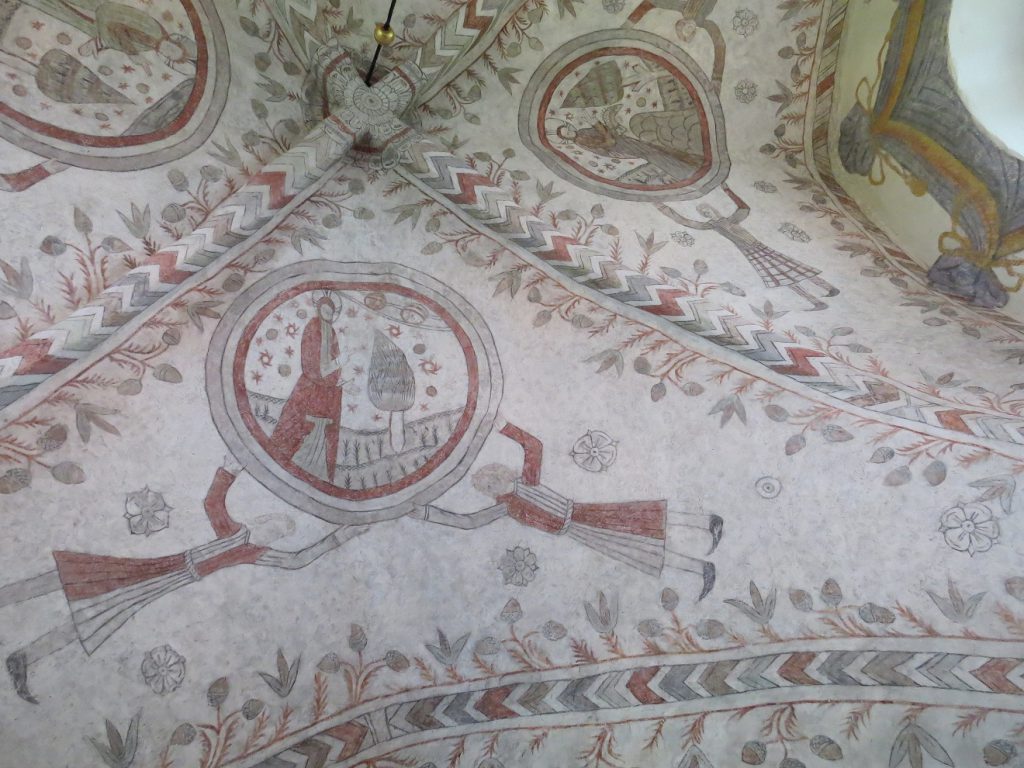
And here is another one showing the creation of the creatures of the sea:

Here’s a close-up of the geometric and acorn design:
Later artists added detail on the walls and around the windows, but these elements (I think) lack the charm of the older artwork:

Here’s an overview of the entire ceiling area as seen from the sanctuary:
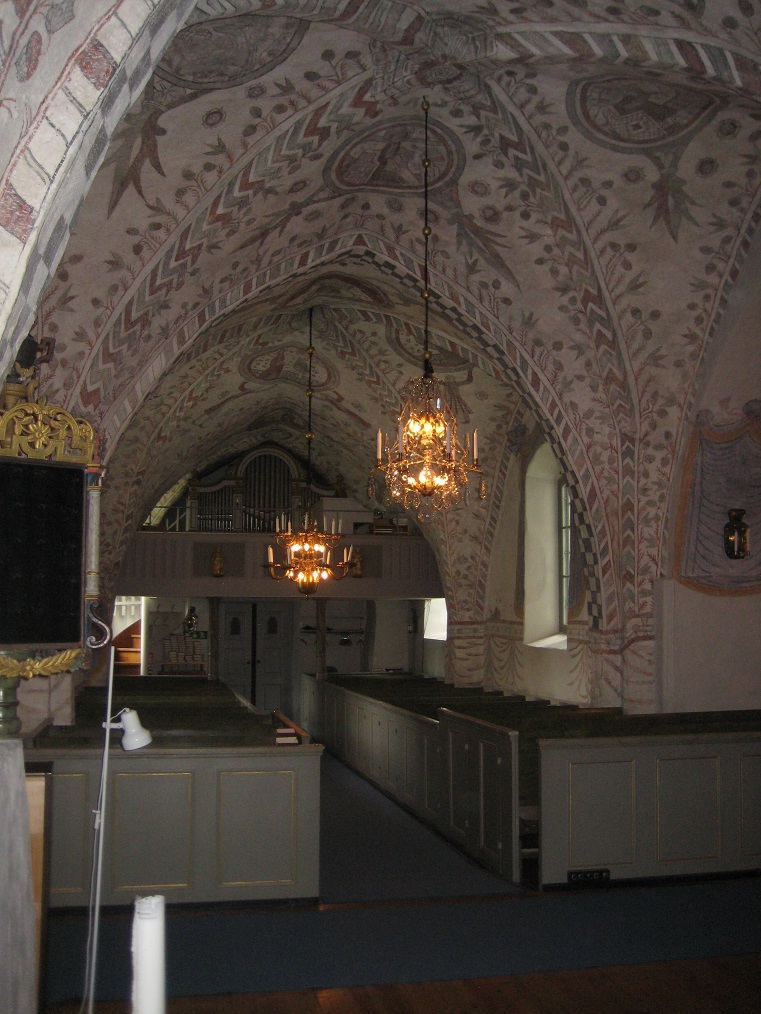
There are some additional paintings in the sanctuary area that are dated in the 1600’s and probably of considerably less artistic value. These include some family crests and a large “fall of man” diorama.
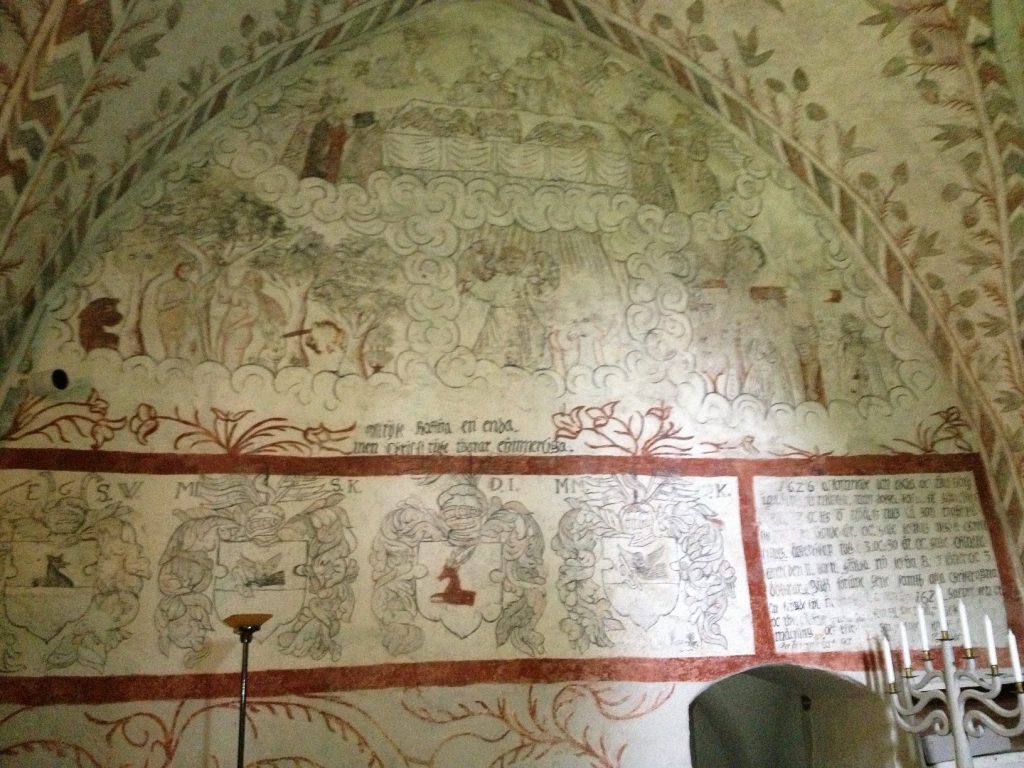
Many old Lutheran churches in continental Europe used to have similar frescoes. But many of those frescoes were destroyed for theological reasons after the Reformation. The many wars that raged across Europe also contributed to their destruction. Sweden has been relatively peaceful through the centuries, and the Church leadership there was much more tolerant of the pre-Reformation artwork in its churches.
For more information about Swedish “lime paintings” or frescoes, here is an excellent website: http://medeltidbild.historiska.se/medeltidbild/typforemal/kalkmalning/default.asp.
They have a page dedicated to the artwork in Marbäck, with close-up photos of some of the creation images:
http://medeltidbild.historiska.se/medeltidbild/visa/foremal.asp?objektid=910702M2#
